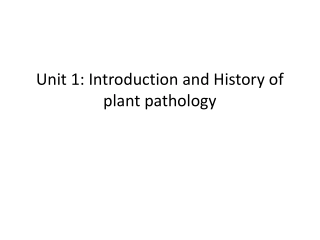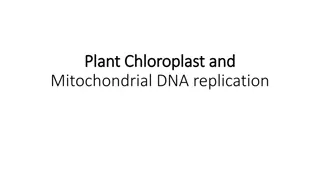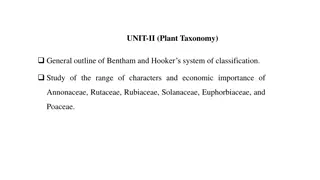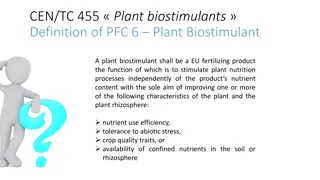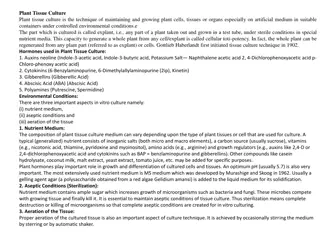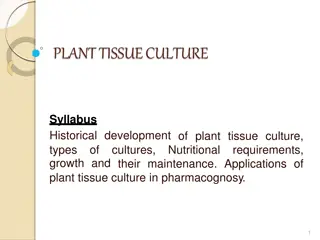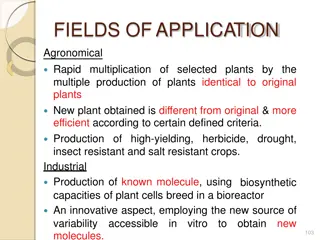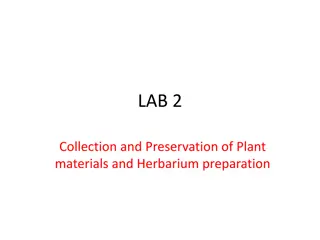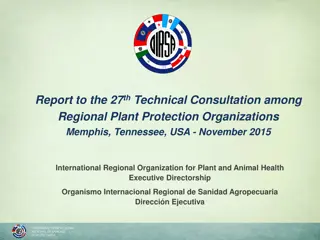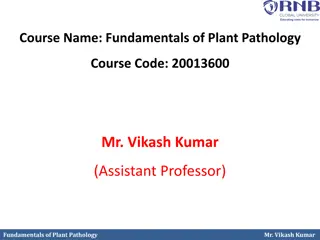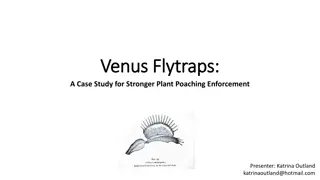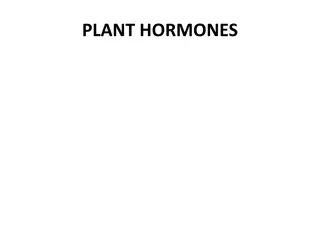Deciphering the ICBN for Plant Enthusiasts
The International Code of Botanical Nomenclature (ICBN) is a vital reference for plant enthusiasts, providing guidelines for naming and classifying plants. Understanding the ICBN helps in proper identification and communication within the botanical world. This comprehensive system offers insight into the history and principles of plant taxonomy, ensuring consistency and accuracy in plant naming worldwide. Delve into the ICBN to enhance your botanical knowledge and appreciation of plant diversity.
Download Presentation

Please find below an Image/Link to download the presentation.
The content on the website is provided AS IS for your information and personal use only. It may not be sold, licensed, or shared on other websites without obtaining consent from the author.If you encounter any issues during the download, it is possible that the publisher has removed the file from their server.
You are allowed to download the files provided on this website for personal or commercial use, subject to the condition that they are used lawfully. All files are the property of their respective owners.
The content on the website is provided AS IS for your information and personal use only. It may not be sold, licensed, or shared on other websites without obtaining consent from the author.
E N D
Presentation Transcript
Content Introduction Principles Who introduced this Important Rules of Nomenclature Subsequent Meeting of IBC Ranks of taxonomic catgories Codes of Nomenclature Typification Publication Author Citation Choice of names Rejection of names
Introduction The nomenclature involves the principle govern by rules formulated & adopted by International botanical congress , the rules developed by IBC are listed formally in a code called International code of botanical nomenclature
Principles Botanical nomenclature is independent of zoology nomenclature The application of name of taxonomy groups is determined by means of the nomenclature types The nomenclature taxonomic groups is based upon the priority of the publication Each taxonomic group with a particular position & rank can only hare one correct scientific name The scientific name of taxonomic group treated or written in latin language The rules of nomenclature are retroactive unless expressly limited
Who introduced this The formal introduction of this system of naming species is credited to Swedish natural Carl Linnaeus beginning with his work species plantarum in 1753 Linnaeus :- Swedish botanist , physician & zoologist who laid the foundation for the modern biological naming scheme of bionomical nomenclature He is known as the father of modern taxonomy & is also considered one of the father of modern ecology , effectively
Important Rules of Nomenclature Ranks & ending of taxa Principle of priority Type method Synonyms & related definitions Citation of author Name of cultivated plants Latin diagnosis Effective & valid publication
Subsequent Meeting of IBC 1892 Rochester code 1905 Vienna code 1907 American code 1910 Lawrence 1930 Cambridge congress 1983 latest I.C.B.N. Sydney Australia a.6 Principle b.75 Rules c.57 Recommendations
Codes of Nomenclature International Code of Botanical Nomenclature (ICBN) for plants ( including Fungi & Cyanobacteria ) International Code for Nomenclature of Cultivated Plants ( ICNCP ) only for cultivated plants International Code of Zoological Nomenclature ( ICZN ) for Animals International Code of Nomenclature of Bacteria ( ICNB ) International Committee on Taxonomy of Viruses ( ICTV ) for Viruses
Typification The code has greatly emphasized on typification of taxa in order to bring about stabilization of names. The naming of taxonomic groups is determined by means of nomenclature types where a nomenclatural type is that element , to which the name of a taxon is permanently attached , either as a correct name or as a synonym. It is not necessarily the most typical or representative element of the taxon. 1.Holotype 2.Isotype 3.Paratype 4.Syntype 5.Lectotype 6. Neotype 7.Topotype
Publication Effective Publication is publication which is accordance with the rules ( i.e. printed matters has to be distributed to the general public or at least to botanical institutions with libraries accessible to botanist generally ) Valid Publication is a publication that is accordance with the rules I.e. Have a latin diagnosis or description & Give a clear indication of rank Designate a type & its location Publish in a scientific journal
Author Citation The name of a taxon ( unitary , binary or ternary ) is incomplete unless the name of the author or authors who first validly published the name , is cited along the name with it. This helps in verifying the dates of publication and in imparting precision in biological nomenclature. There are several rules for author citation Usually the names are cited in abbreviated forms but never underlined , e.g. Vitex Linn If the name of the plant is jointly published by two authors , their names should be linked by means of et. Or an ampersand ( & ) When more than three author are involved , citation is normally
Choice of names When the taxon rank is changed , for e.g. , species becomes a genus , the earliest legitimate name in its new rank is its correct name When two or more taxa of the same rank are united into one , e.g. two or more genera are united , the oldest legitimate name of these taxa should be retained as the name of the united taxon. When a genus or a species is divided into two or more genera or species , the original name of the genus or species must be retained
Rejection of names a legitimate name or epithet must not be rejected merely because it is inappropriate or disagreeable , or because another is preferable or better known ,or because it has lost its original meaning. However , a name must be rejected if it was nomenclaturally superfluous when published. Similarly , a name or epithet rejected is replaced by the oldest legitimate name or in a combination by the oldest available epithet in the rank concerned. The following types of name can be considered to be illegitimate & unusable
Reference www.wkipidia.com www.google.com Taxonomy of Angiosperms By-A.V.S.S. Sambamurty Plant Systematics By- Gurcharan Singh Advanced plant taxonomy


